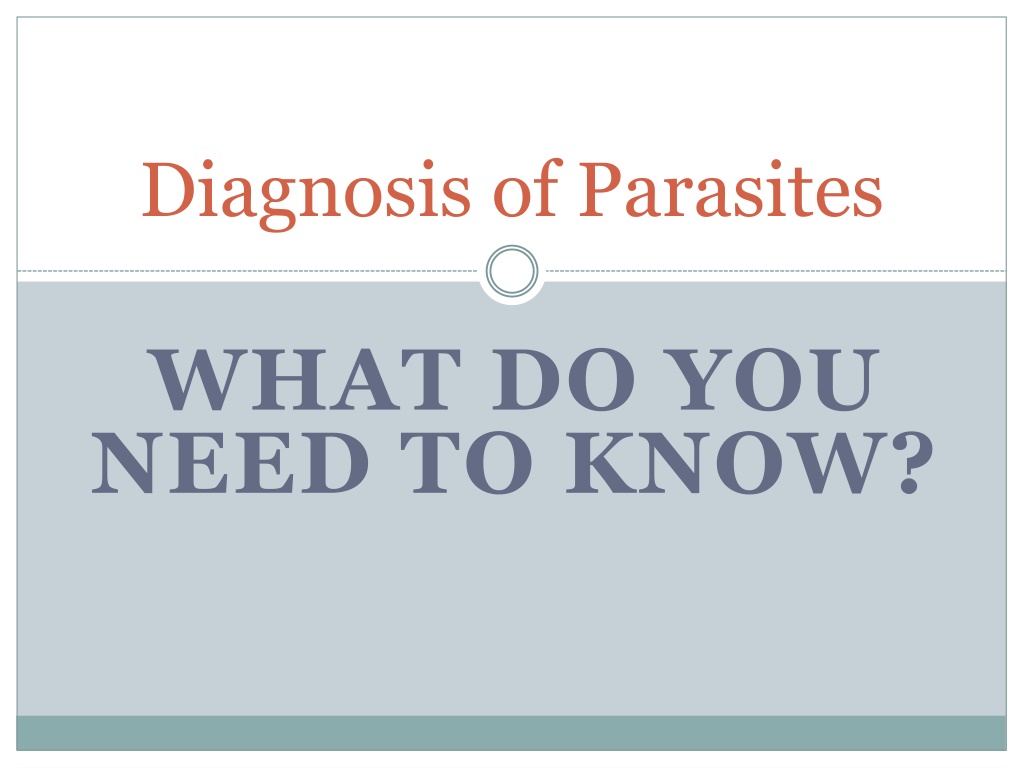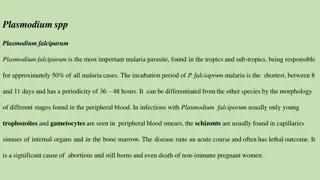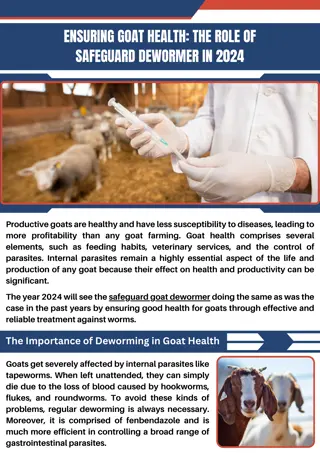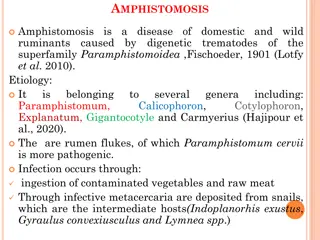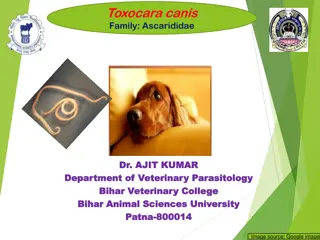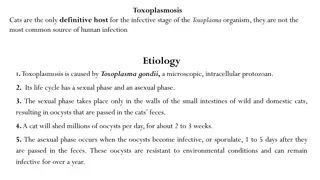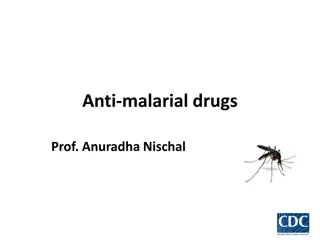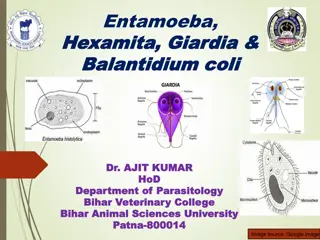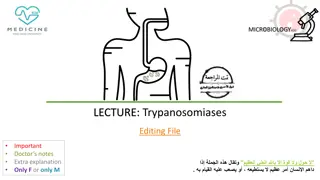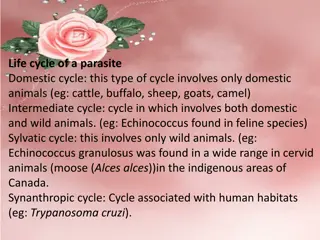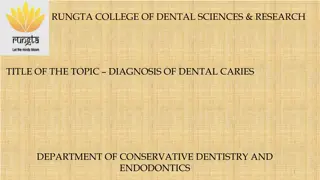Understanding Parasite Diagnosis: What You Need to Know
Explore the essential information for diagnosing parasites, including their appearance, size, morphology, and where they are typically found. Learn how to identify parasites based on their characteristics, such as size, shape, and the host species they infect. Discover key factors involved in diagnosing parasites through morphology, size, and location in different host organisms and environments.
Download Presentation

Please find below an Image/Link to download the presentation.
The content on the website is provided AS IS for your information and personal use only. It may not be sold, licensed, or shared on other websites without obtaining consent from the author. Download presentation by click this link. If you encounter any issues during the download, it is possible that the publisher has removed the file from their server.
E N D
Presentation Transcript
Diagnosis of Parasites WHAT DO YOU NEED TO KNOW?
WHAT YOU NEED TO KNOW? WHAT DOES IT LOOK LIKE? WHERE WAS IT FOUND?
Diagnosis by Morphology How big is it and what does it look like? Grossly size and shape Do you need a microscope to see it? High or low power? size and shape Does it have legs? Six or eight? Is it segmented or smooth? Male, female or both?
SIZE Bowl full of worms each 6 to 8 inches One worm more than 6 feet long Small intestine feeder pig Small intestine human 200 um seen at 400 magnifications adult fluke 1 inch long Feces of 1 month piglet Liver cow
Microfilariae ca 300 um red blood cells lysed Eggs 250 and 65 um, Oocysts 65 um Blood dog Feces Alpaca flotation Eggs: Strongyloides (larvated) Trichostrongyle type Eggs, Moniezia (tapeworm) Recently weaned Goat kid fecal flotation SIZE SHAPE
NUMBER OF LEGS 0 legs 6 legs 8 legs Segmented Smooth
SEX Female Haemonchus Male both both
Where was it found? HOST? From which animal did it come: species, sex, age? ORGAN or TISSUE? Where was it found: on the skin? where in the body? feces or urine? ENVIROMENT? Geography? time of year? wild animal, pasture, barn or lot?
Host Some parasite species are host specific, others environment specific What other species are in contact with the host How old is the host and where has it been Male or female and when or if in the reproductive cycle
ORGAN skin (where on body) digestive tract (where) reproductive tract cardiovascular tract (free or in cells) respiratory tract body cavity Feces Blood Urine
ENVIRONMENT The climate, soil and vegetation determine if a parasite can survive in a specific geographic locality outside the host Weather conditions determine when they are transmitted How does the host make a living (diet, protection from weather or predators, who else is in contact) Increasing or decreasing chances of exposure
